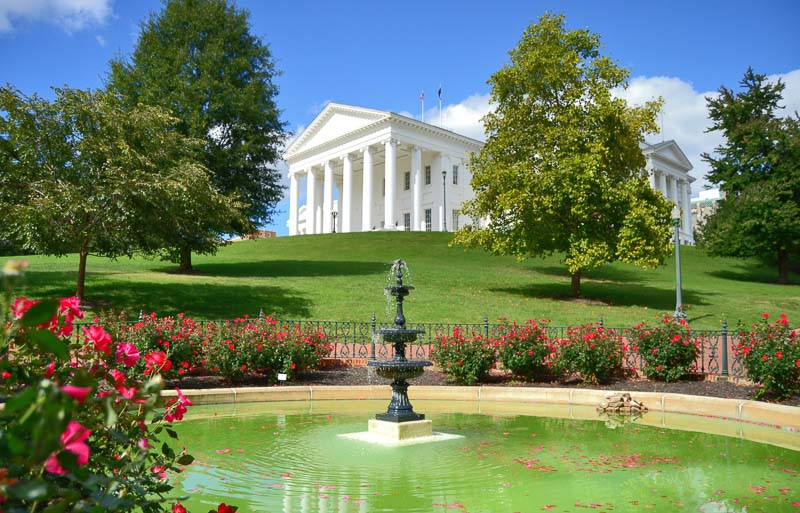Virginia Native Plants
Virginia’s varied ecosystems, from the coastal plains and marshlands to the Appalachian Mountains, host an array of native plants that flourish in these unique conditions.
- The coastal regions are characterized by plants like the Seaside Goldenrod (Solidago sempervirens) and Beach Plum (Prunus maritima), adapted to sandy soils and salt spray. Wetland species such as the Bald Cypress (Taxodium distichum) and Swamp Milkweed (Asclepias incarnata) thrive in the state’s marshes and bogs.
- In the Piedmont and rolling hills, one finds diverse flowering plants like the Virginia Bluebells (Mertensia virginica) and Wild Geranium (Geranium maculatum). Common trees include the Dogwood (Cornus florida) and the Red Maple (Acer rubrum).
- The Appalachian Mountains region, with its cooler climate and rugged terrain, hosts a variety of species like the Mountain Laurel (Kalmia latifolia) and Catawba Rhododendron (Rhododendron catawbiense). The forests are home to tree species like the Eastern Hemlock (Tsuga canadensis) and American Chestnut (Castanea dentata).
These native plants play vital roles in Virginia’s ecosystems, offering food and habitat for local wildlife, maintaining soil health, and conserving water. Incorporating them into your garden not only supports Virginia’s unique biodiversity but also creates a landscape resilient to local climate conditions. Plus, native plants often require less maintenance, as they’re naturally suited to thrive in the local environment.

